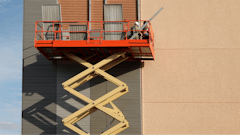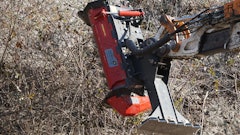
It might be January right now, but when it comes to your outdoor power equipment, spring is right around the corner. In many parts of the country, the window to get the garden ready for planting and the lawn primed for growing is often narrow, so it makes sense to have equipment ready to go so you can help your customers take advantage of the weather when it cooperates.
In a perfect world, all outdoor power equipment would receive thorough winter storage maintenance, but all is not lost if yours didn?t. You can start now to get your equipment in tip top shape before the first crocus blooms.
The following maintenance tips should be followed throughout the year, with special attention paid when getting machinery ready for a new season or for long-term storage.
In general...
- The most important storage tip is to avoid storing the unit with gasoline in the tank. While fuel stabilizers are better than nothing, it?s always better to run the engine dry before storing. If the machine was stored with fuel in it, carefully drain the stale fuel in a well-ventilated area and dispose of the waste in an environmentally sound manner.
- Dirt ingestion is the number one cause of premature small engine failure, so maintaining the air filtration system is vital. Start by removing the filter assembly and inspecting both the foam pre-filter and the filter itself. If either are significantly soiled, they should be replaced.
- Remove the spark plug and clean the outside of it. Check the electrode gap and readjust it. Some sources say it?s best to replace the plug rather than try to clean and reset the gap on the original. When replacing, be sure to do so with the correct part number for the engine being serviced.
- Check the spark arrestor for carbon buildup. Replace if necessary. Note: If excessive carbon buildup occurs, it?s a good idea to visit your dealer.
- Check the fuel lines for errosion. (Leaving stale fuel in the lines for long periods of time can lead to degradation and errosion of the plastic or rubber lines.) Check the fuel filter for cleanliness and proper operation.
- Check the condition of the belts, looking for cracks or glazing of the ?V? surfaces. Replace any belts that show wear or damage. In most cases, the belt is used for a clutch. It if?s necessary to adjust the belt tension, consult your owner?s manual. If you find that the belt can?t be tensioned sufficiently in the engaged position, then the belt is stretched and must be replaced.
- The chain and sprockets that are enclosed in a simple cover should be cleaned with compressed air or a wire brush. Lubricate with chain lube. Lubricating the chain with grease or oil will cause dirt to stick to the chain and shorten its life.
- Check the chain for proper tension. It should not have excessive slack. If it can?t be tightened enough to remove all of the slack, it should be replaced. When replacing the chain, check the sprockets for wear. Sharp teeth on the sprockets indicate excessive wear and they should be replaced.
- Keep all grease points lubricated before use and after every eight hours of operation. Check the owner?s manual for the location of lubrication fittings.
The business end
In the case of tillers, aerators, sod cutters and other equipment that uses a tool to manipulate the earth or vegetation, check the condition of the cutting or coring mechanism.
- Check your tiller?s tines for wear. If the ends come to a point, it means they are worn and should be replaced. Check the bolts securing the tines to the shaft. Replace any missing or broken bolts and tighten any loose ones.
- Examine the tiller tine shaft and axle shaft bushings and seals. Dirt and materials that get wrapped around the shafts can damage the seals and cause oil leaks. If there is a significant amount of oil, then the seals are worn and must be replaced.
- On aerators, check and replace bent, broken or worn tines.
- On sod cutters, check the cutter blade for wear and gouges. Sharpen the cutting edge as suggested by the manufacturer and replace as necessary.
- For leaf blowers, check that the collection bag is intact and the zipper works. On backpack blowers, check that the harness is properly connected to the blower.
Start me up
- On all outdoor power equipment, check and tighten all nuts and bolts before sending the machine on its first rental of the season. Check tire pressures and set to correct PSI. Examine the starter rope and throttle cable for wear and function and replace, if necessary.
It goes without saying that it?s essential to change the engine oil regularly on all equipment. Note: some engines have one oil reservoir and others have two. Check the engine manual for the location of the oil reservoir, and, for best results, always use the grade of oil suggested by the engine manufacturer. See manufacturers? recommendations for specific guidelines.
Last but not least, add fresh fuel to the tank, checking for any fuel leaks. If no leaks are visible, then the machine can be started. If the cylinder was coated with engine oil during storage preparation, the engine will smoke briefly at startup. Check the clutch control to make sure the unit stops when the clutch control is released.
Ensure all safety devices are functioning properly. Touch up any damaged paint and coat other areas that could rust with a light film of oil.
Worth a pound of cure
As with all areas of life, there is no substitute for preventive maintenance. While it?s always best to give equipment a thorough once-over before it?s stored for the winter months, it?s also a good idea to perform a quick checkup before it goes on rent for the the first time this year. The old saying is true, an ounce of prevention is truly worth a pound of cure.


























